When you think of France, flamingos probably don’t come to mind. Eileen Cho explores the Camargue Delta, an offbeat area of Provence. Here's what to know before you visit.
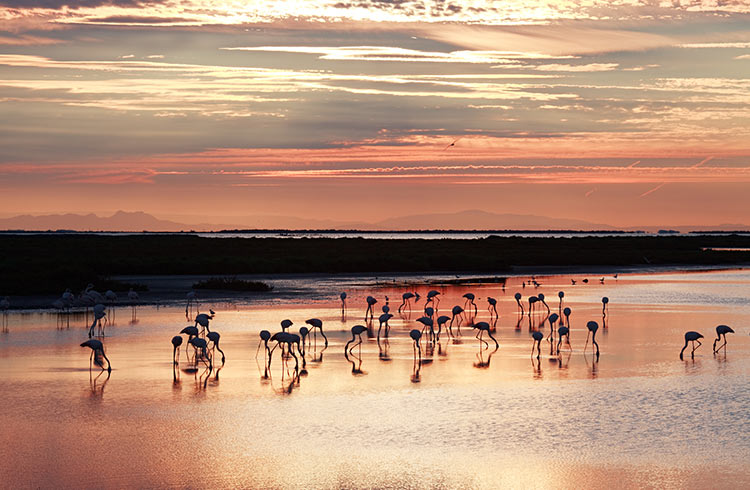 Photo © Getty Images/rusm
Photo © Getty Images/rusm
Most people associate Provence with fields of lavender and sunflowers, apéro snacks made with fresh tomatoes, local olive oil, and the warm Provençal sun. I used to, too.
I’m an American living in Paris, but every July, I head south to Arles, in the southern French region of Provence. Last year, while eating at my favorite restaurant in the city, I discovered French sea salt from nearby Camargue. This salt is one of France’s culinary prides. Intrigued, I decided to explore the region myself.
The Camargue region
The Camargue region lies between the Mediterranean Sea and both mouths of the Rhône river, which form a delta – an area rich in nutrients and vegetation.
It turns out that la Camargue is the biggest delta in Europe, home to government-protected, rich wetlands and more than 400 species of birds – including, unexpectedly, flamingos.
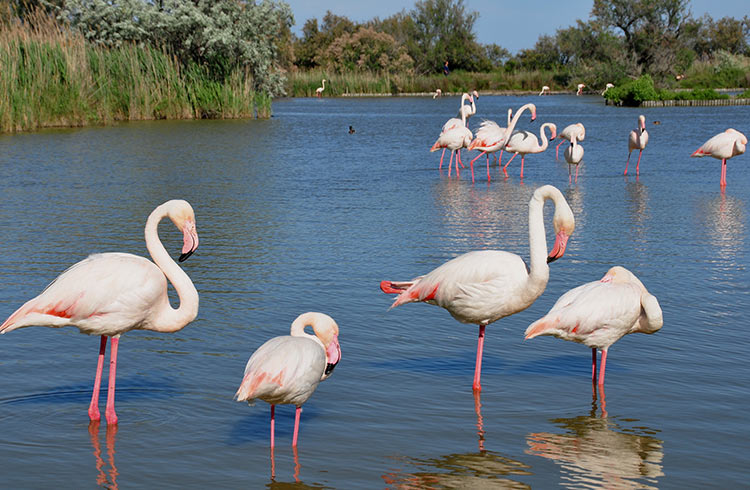
Safari tours in Camargue
When I call a local tour company asking if it offered nature tours, the lady on the phone laughs and tells me its safari tours were the bestseller. I sign up for a half-day tour.
I am picked up in an open-top jeep by Jean-Michel, the most vivacious and friendly human I'd ever encountered in my years living in France. Jean-Michel had grown up in the region and proudly claimed to be a true Arlésien, and also a gardien – a cowboy specific to the Camargue. The gardiens traditionally herd cattle and bulls in the region. There are two types of bulls here, Spanish bulls for bullfighting in Spain and Camargue bulls that are used in the arenas for bull racing in Provence. Unfortunately, these animals are used for entertainment or slaughtered – a harsh, cruel reality.
He passes out maps to our group and explains the cultural, natural and economic importance of the river mouths, while pointing to tiny specks of land dotting the south. These tiny islands are home to hundreds of animals, as well as sansouires (salt flats), étangs (salt water lakes), and marshes that form part of the Camargue Delta.
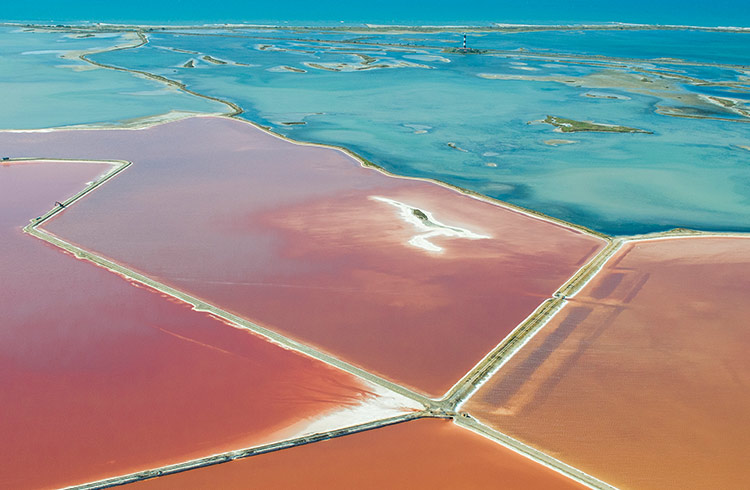
I instantly regret only booking the half-day tour. If I had signed up for the full-day tour, the tour would have continued to Aigues-Mortes Salt Marsh, the largest salt marsh in the Mediterranean, where the famous Camargue sea salt is produced.
Once on the bumpy dirt road, we drive through fields where majestic white horses run freely. The Camargue horses are indigenous to the area and although they are smaller than most horse species used for farming around the world, they are incredibly strong.
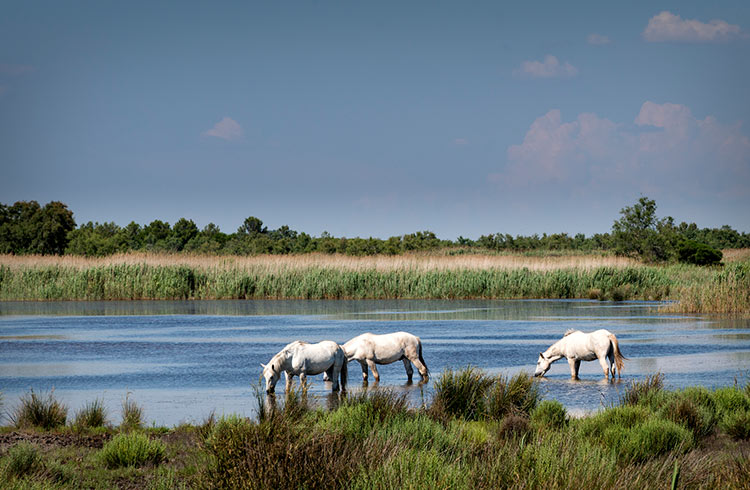
As we near the water of the Parc Naturel Régional de Camargue, Jean-Michel tells us to be as quiet. Far in the distance, we can see specks of pink everywhere in water – flamingos. Originating from the west Mediterranean, the flamingos have been reproducing on a tiny island in the Camargue since the 1970s. According to our guide, these stunning birds can be found seeking refuge from April until September (however, according to some experts, due to climate change, the migration patterns have shifted).
The wildlife here is strictly protected, so visitors aren’t allowed to get too close. But from afar, wishing I’d packed my binoculars, I see thousands of pinkish grey dots decorating the marshes. I learn the flamingos have grey feathers that turn pink due to a natural pink dye found in their diet.
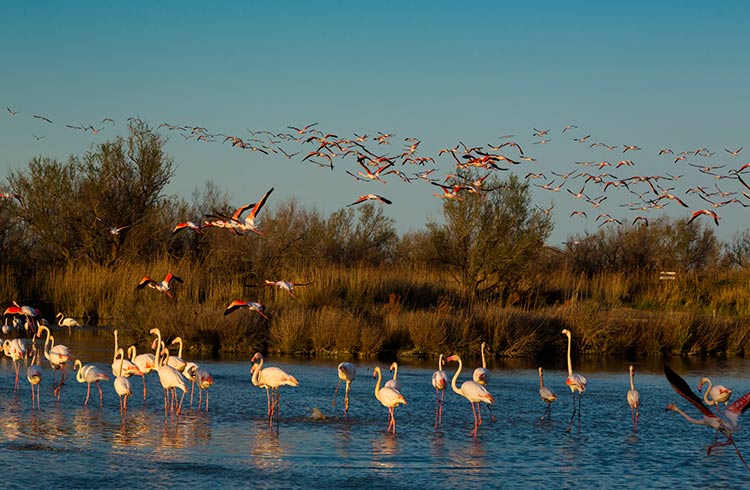
The sleepy beach town of Saintes-Maries-de-la-Mer
After appreciating the natural beauty of the wetlands, the tour continued to Saintes-Maries-de-la-Mer, a sleepy beach town in the Camargue. Here we have free time to explore the town and swim in the sea. After dipping my toes in the water, I rush to find an ice cream shop to taste the treats that are made with the salts and algae from the region.
Our safari adventure was coming to an end but my fascination with the region was just beginning. After living in France for several years, I grew accustomed to visiting cities and towns to see French architecture, museums, and enjoy the local food produce. I never imagined I’d find an abundance of wildlife right beside fields of lavender and sunflowers.
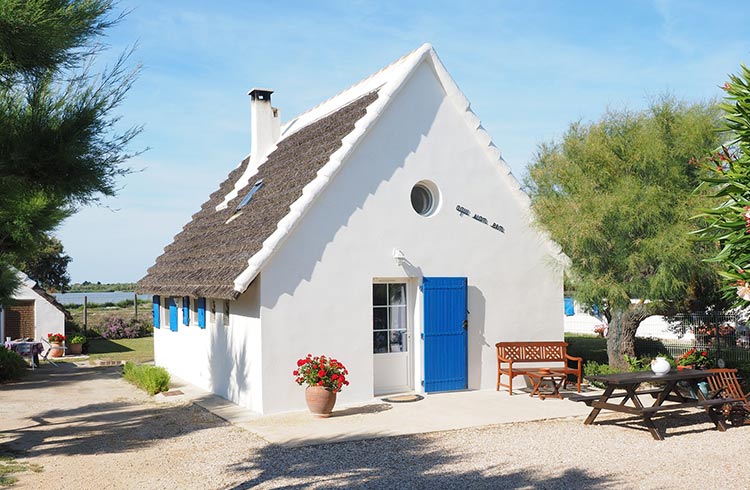
Trip notes
When to go
Safari companies run tours year-round, but the best time to visit is in spring and autumn (April until September) – considered to be the best time for birdwatching. However, please take note that more guides and experts have been noticing a slight change in the migration times of the birds in the region.
Ethical photography and animals
Don’t fly your drone too close to wildlife, and never wear perfume on safari as some animals may be sensitive to artificial scents. Many species of wildlife here are endangered and/or protected, seeking refuge in the delta, so do not approach them – especially nests – and keep sounds to a minimum near animals.
Never feed the wildlife, unless a gardien gives you food to feed his horses.
What to pack
Eco-friendly sunscreen, mosquito spray without DEET, a wide brim hat for sun protection, a wind breaker – as it can get breezy near the sea and in the safari jeep, binoculars to see animals in the distance, a camera and correct lenses if you’re trying to photograph the experience.
How to get around
To get to Arles, you can take SNCF trains after flying into Marseille, Nice, Toulon, or Paris. In Arles, the best way to get around the Camargue is on a 4x4 safari tour, which includes a guide as most parts of the park are protected.
Some tour operators also have horseback riding and trekking tours through the Camargue. Bicycle tours are also popular in the region, but not ideal during the hot summer months (June–August).
Related articles
Simple and flexible travel insurance
You can buy at home or while traveling, and claim online from anywhere in the world. With 150+ adventure activities covered and 24/7 emergency assistance.
Get a quote


No Comments